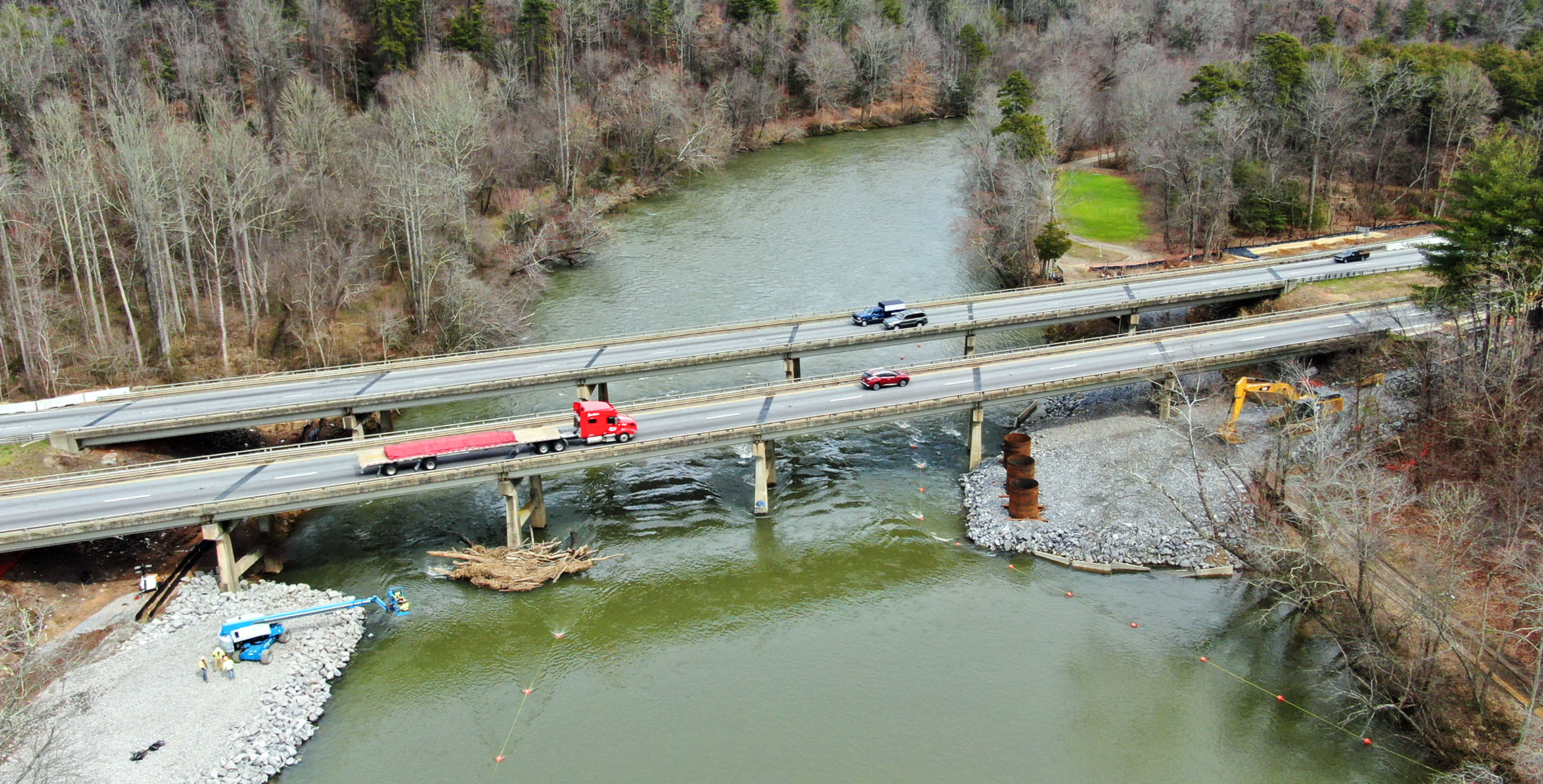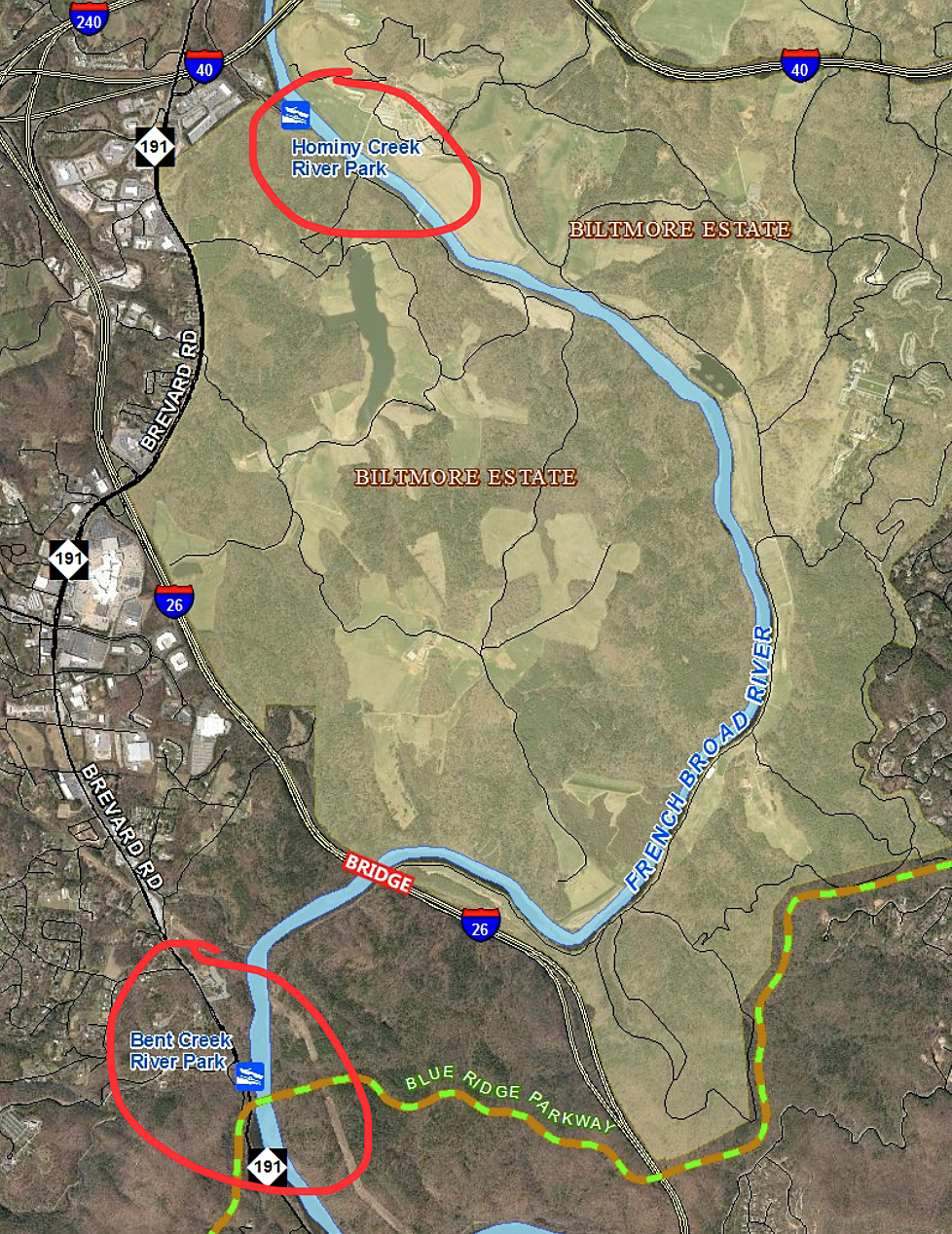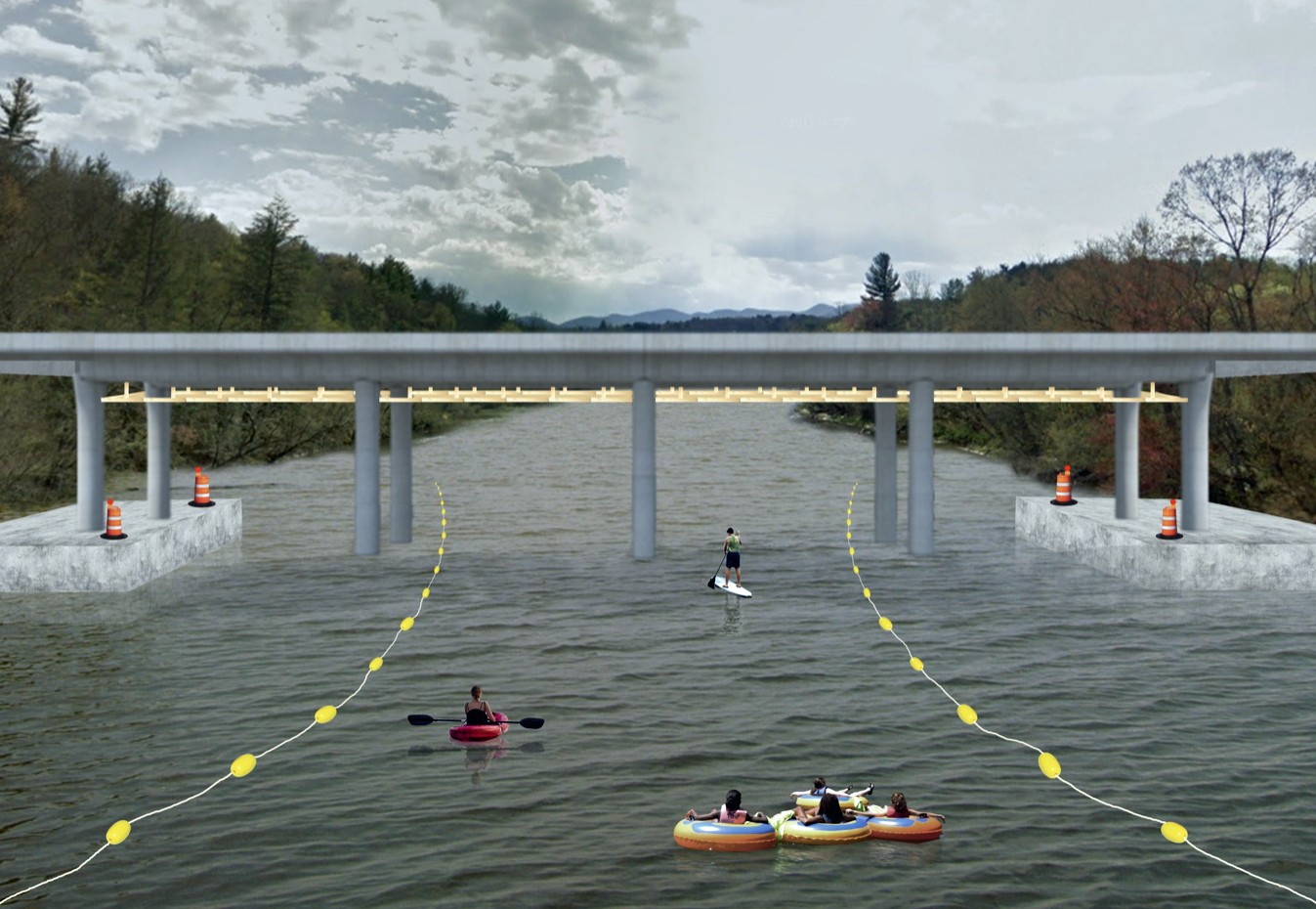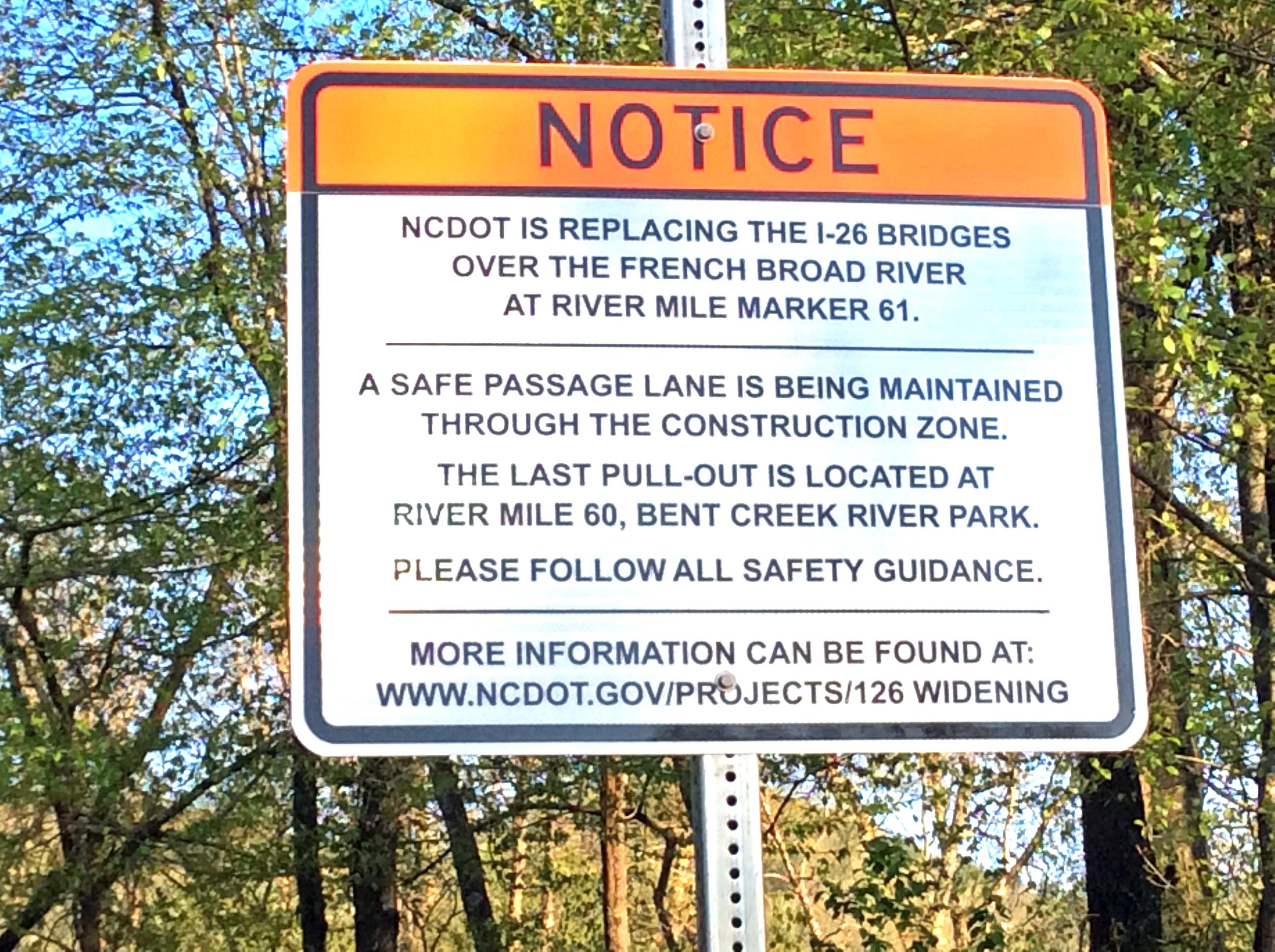
The French Broad River is one of Asheville’s most popular outdoor recreation spots for residents and visitors. Whether you paddle, fish, tube, float or boat on the river, the N.C. Department of Transportation wants you to stay safe on the water during the I-26 widening construction.
How the Widening Project will Affect River Users
 Click to enlarge detail.
Click to enlarge detail. NCDOT is replacing the I-26 bridge over the river as part of the widening project to accommodate additional traffic and increase driver safety. Construction on a new bridge started in early 2020 and will continue in phases. The old bridge is scheduled to be removed in 2023.
To ensure the safety of everybody on the water, navigation of the river will be narrowed near the bridge.
How NCDOT is Helping Keep Boaters Safe
 B
Bridge construction started during the early part of 2020 and safety elements were installed before heavy equipment arrived on site. NCDOT and its contractors have created safe-passage lanes on the river under the bridge to direct boaters.
Catchment devices will be installed on the overhead structures prior to any over-water activities to help protect the river and its users from potential falling debris or materials.
If a river closure is necessary, additional floating signage will be used to alert river users. These will direct users to the nearest take-out.
What You Need to Do on the River

● Pay attention to warning signs that have been placed at 14 public access areas in Henderson and Buncombe counties.
● Know that the last public take-out before the bridge is Bent Creek River Park, one mile upstream from the I-26 bridge.
● Follow any additional instructions on floating signs and use the safe travel lane under the bridge.
● DO NOT USE the causeway area under the bridge as a take-out point.
● Always wear your life jacket (and use a quick release leash if standup paddle boarding) on the river.
Stay River Safe!
If you paddle or float down the French Broad River in the area affected by the I-26 construction or elsewhere, please consider these safety tips from the American Canoe and Kayak Association:
- Always wear a life jacket. It cannot save you if it is under the bungees on your deck or otherwise not on your body. It is extremely difficult if not impossible to put on a life jacket once you are in the water.
- Know your skill limits and stay within them.
- Dress for the water temperature, not the air temperature.
- Be aware of all take-out points, river hazards and water levels.
- Even shallow water can move fast and be dangerous, especially around bridge piers/piling, rocks and downed trees.
- If you are stand-up paddling, wear a quick-release safety leash that will keep your board connected to you but can be easily detached if it becomes entangled.
- Alcohol and boating do not mix.
- Always let someone know where and when you will be paddling. Let them know when you are off the river.
- Do not overload your paddle craft.
- Avoid paddling or floating after storms. Water quality can be impaired and increased debris can be in the river.
Ensuring River Water Quality
NCDOT has partnered with the U.S. Geological Survey (USGS) to assess the water quality and geomorphologic impacts resulting from the widening of I-26. Streamflow, precipitation, and water quality monitoring data, along with periodic assessments of geomorphology, will support NCDOT construction site inspections by allowing adaptive responses to potential construction impacts and provide the public with readily accessible, objective information regarding conditions in the French Broad River corridor.
See the French Broad on the USGS live river camera.